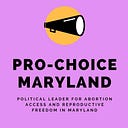It’s time for better paid family leave.
By Jessica Spinali
Paid family leave “provides partial pay to employees who need to take time off from work to care for a seriously ill family member (child, parent, parent-in-law, grandparent, grandchild, sibling, spouse, or registered domestic partner) or to bond with a new child entering the family through birth, adoption, or foster care placement.” (i) Ensuring paid family leave is a reproductive justice issue. The United States is one of only two developed countries that fails to ensure paid family leave to employees.
Only 17% of workers in the United States have access to paid family leave through private employers. (ii) Approximately 35% of female-identifying people are employed by businesses offering paid family leave to all or most female-identifying employees, (iii) and only 22% are employed at facilities offering paid family leave to all female-identifying people. (iv) The situation is even more dire for male-identifying employees. Only 11% of privately hired male-identifying employees are employed by organizations that offer paid family leave to most male-identifying employees, and 9% are at worksites that offer paid family leave to all employees. Lack of guaranteed and protected paid family leave ostensibly limits the successes of individuals because it threatens their financial stability and dignity in parenting and caring for family members.
Paid family leave takes many forms; it helps pregnant people heal postpartum in a safe way that respects their bodies, it allows for parent-infant bonding which improves infant development, (v) it provides stable child care, and it helps individuals care for their older relatives and other family members with different abilities. Everyone would be impacted by regulated and guaranteed paid family leave because, at some point, most all of us will finds ourselves having to take care of a loved one.
If we introduce paid family leave, we need to consider the intersectionality of the implementation and impact, and we can do this by using a reproductive justice lens when invoking paid family leave. The definition of reproductive justice is, “the human right to maintain personal bodily autonomy, have children, not have children and parent the children we have in safe and sustainable communities.”(vi) Reproductive justice does not pertain only to abortion care and peripheral issues, it directly relates to managing one’s one reproductive health in a capacity they choose and ensuring the health of their families.
People of color, people with different abilities, people of varied immigration status, people of different educational levels, people of different ages, and people of different gender identities and sexual orientation are all within the realm of those who would benefit greatly from knowing that following a family health problem or pregnancy they would be financially secure with definite paid family leave.
It is a human right to maintain and raise a family in a safe, nurturing and stable home and community; therefore, we use an inclusive definition of “family” as many people have families that far surpass the aged nuclear family unit of a husband and a wife.
To take a deeper look at the child care available in a scenario specific to the welcoming of a new baby, we must also understand that paying for childcare outside of the home is not a viable option for all. It’s also not a legitimate option for those with infants under six weeks, as Maryland child care centers cannot accept infants under six weeks old (vii). So how do new parents organize child care for their infants if they cannot take the financial hit associated with missing work to care for their child and they’re not afforded the safety net of paid family leave?
Paid family leave would safeguard the health of the parent and child. It would also more feasible for younger parents to maintain their dignity while parenting. Young people should be able to parent with the promise that they’re not going to lose their jobs and sources of livelihood for taking time off to bond and care for their infant. Too many people are forced to make the decision between providing compassionate care for a loved one or infant and affording basic necessities.
Paid family leave also has a direct effect on child welfare. It is strongly associated with decreased post-neonatal mortality: “Researchers estimate that 12 weeks of paid leave would result in 600 fewer infant and post-neonatal deaths per year.” (viii) Additional, financial-worry free time at home with the infant has a positive relation to breastfeeding. There is more opportunity for breastfeeding, which comes with a myriad of health and developmental benefits for the child. (ix)
When a parent is present following birth, they have the time to identify developmental difficulties that could otherwise go undetected. When a father is involved neonatally, it proves to promote emotional stability and educational attainment; it also correlates to better sleep for partner and child.
In Maryland, we can support paid family leave by supporting the Time to Care Act of 2019.
References
i. Employee Development Department, State of California. About paid family leave. Retrieved from https://www.edd.ca.gov/disability/about_pfl.htm
ii. Bureau of Labor Statistics. (2019). Access to paid and unpaid family leave in 2018. Retrieved from https://www.bls.gov/opub/ted/2019/access-to-paid-and-unpaid-family-leave-in-2018.htm
iii. Zero to Three. (2018). The child development case for a national paid family and medical leave program & nbsp; Retrieved from https://www.zerotothree.org/resources/204-the-child-development-case-for-a-national-paid-family-and-medical-leave-program
iv. Zero to Three. (2018). The child development case for a national paid family and medical leave program & nbsp; Retrieved from https://www.zerotothree.org/resources/204-the-child-development-case-for-a-national-paid-family-and-medical-leave-program
v. Winston, R., & Chicot, R. (2016). The importance of early bonding on the long-term mental health and resilience of children. London Journal of Primary Care, 8(1), 12–14. doi:10.1080/17571472.2015.1133012
vi. Sister Song Reproductive Justice, Retrieved from https://www.sistersong.net/reproductive-justice
vii. Military One Source. Child care regulations in maryland. ().US Department of Defense. Retrieved from https://www.militaryonesource.mil/
viii. Zero to Three. (2018). The child development case for a national paid family and medical leave program & nbsp; Retrieved from https://www.zerotothree.org/resources/204-the-child-development-case-for-a-national-paid-family-and-medical-leave-program
ix. Nuffield Department of Population Health. The effect of breastfeeding on child development. Retrieved from https://www.npeu.ox.ac.uk/research/breastfeeding-child-development-186
